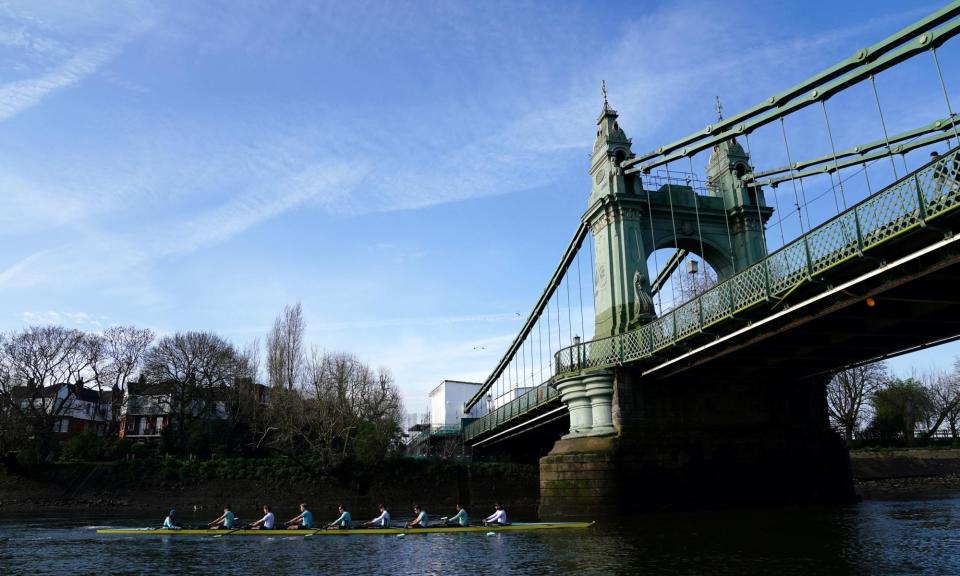Boat Race organisers warn rowers not to enter water after E coli discovery

Boat Race organisers have issued new safety guidance for the race on Saturday, warning rowers not to enter the water and to cover any open wounds, after high levels of E coli bacteria were found on the River Thames course.
It means the traditional celebration in which members of the winning team often jump into the river – which was seen last year when the Cambridge men’s cox Jasper Parish jumped into the Thames at Mortlake – could be consigned to history.
Instead the Oxford and Cambridge crews will be encouraged to wash themselves down at a dedicated cleansing station at the finish. However, organisers have confirmed to the Guardian that the 78th women’s race and 169th men’s race will go ahead as planned.
The new guidance was issued after the River Action campaign group found an average of 2,869 E coli colony forming units (CFU) per 100ml of water in 16 tests around Hammersmith Bridge, which is just short of halfway along the 4.25-mile Boat Race course.
To meet the Environment Agency’s inland bathing water quality standards, the level should be below 1,000 CFU per 100ml. The E coli bacterium, which is found in faeces, can cause a range of conditions including urinary tract infection, cystitis, intestinal infection and vomiting, with the worst cases leading to life-threatening blood poisoning.
River Action said the testing locations suggested the source of pollution is from Thames Water discharging sewage directly into the river and its tributaries. It said this was based on publicly available data which showed that the water company had discharged sewage into the Greater London area of the River Thames for 1,914 hours from the start of 2024 up to 26 March.
River Action, British Rowing and The Rivers Trust have now issued new guidance to rowing clubs across the UK on safety in polluted waters, which has been included in the Boat Race briefing packs to both universities. Rowers are also advised on the importance of covering cuts, grazes and blisters with waterproof dressings, told to take care not to swallow river water that splashes close to the mouth and to clean all equipment thoroughly.
In a statement to the Guardian, the Boat Race said it supported the research carried out by River Action and confirmed that it would be implementing similar safety measures for thte race on Saturday. “Water quality is an ongoing concern for the Boat Race,” it said.
“We have put in place a series of precautionary measures this year to protect the health of our athletes, which includes guidance regarding the covering up of open wounds, regular handwashing, a cleansing station at the finish area and highlighting the risks of entering the water.
“We will also be taking on board British Rowing’s recent Poor Water Quality Guidance, issued in partnership with River Action, as we look forward to the Gemini Boat Race 2024.”
Meanwhile, River Action’s chief executive, James Wallace, criticised Thames Water for not doing more to improve water quality in the River Thames. “We are in a tragic situation when elite athletes are issued with health guidance ahead of a historic race on the capital’s river,” he said. “Our water quality results show what happens after decades of neglect.”
Prosecutions of Thames Water by the Environment Agency for pollution incidents led to fines of £35.7m between 2017 and 2023, with the company fined £3.33m last July after millions of litres of raw sewage flooded two rivers near Gatwick.
Thames Water and the Department for Environment, Food and Rural Affairs (Defra) have been contacted for comment by PA Media.

 Yahoo Sport
Yahoo Sport 



































































